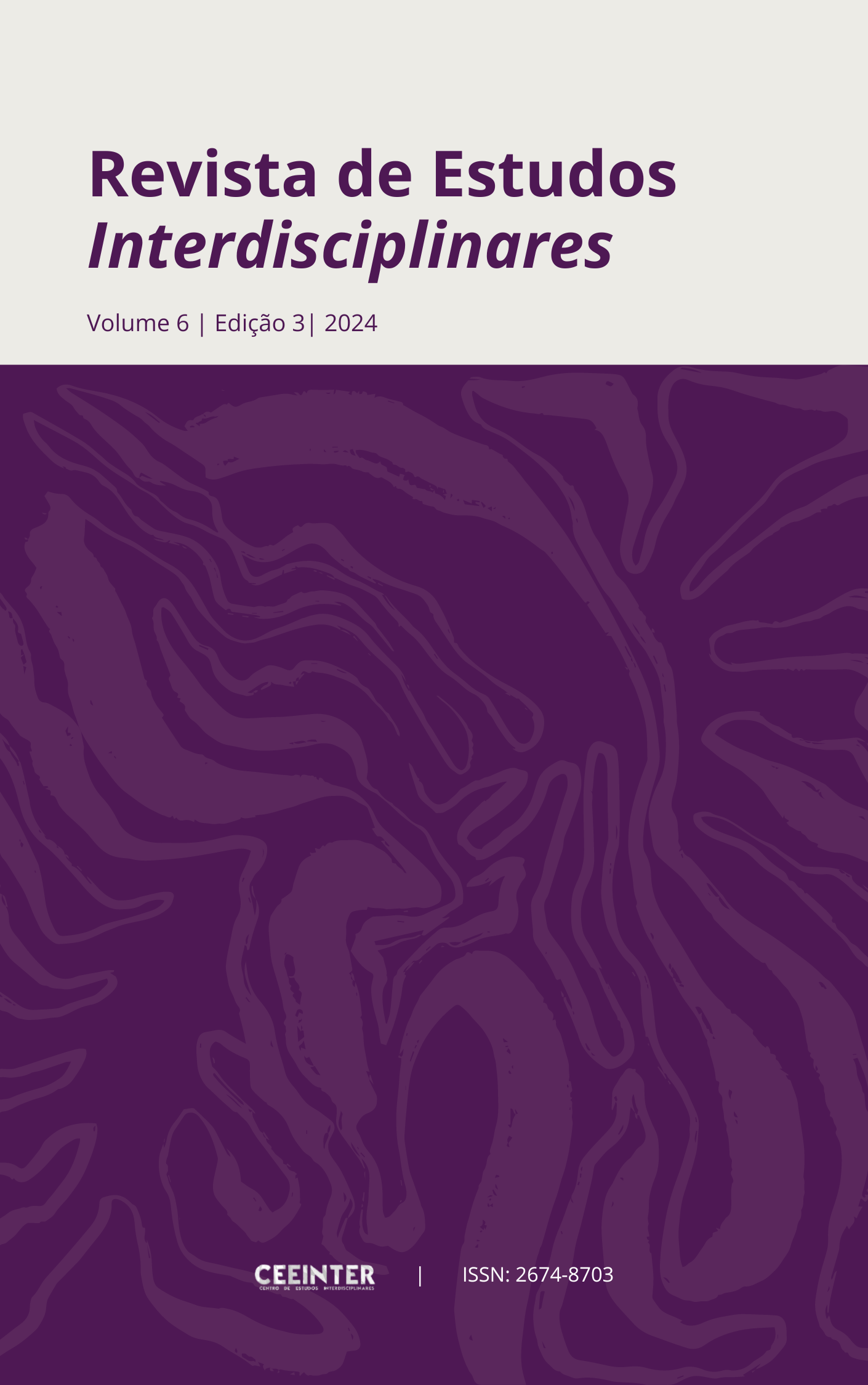Identification of Coffee Borer and Rust in Coffee Plants Using Digital Image Processing and Convolutional Neural Networks
Visualizações: 399DOI:
https://doi.org/10.56579/rei.v6i3.972Keywords:
Deep Learning, Computer Vision, Convolutional Neural Network, Leucoptera Coffeella, Hemileia VastatrixAbstract
The global demand for coffee increases every year, and Brazil is one of the largest producers worldwide. With the high volume of production, there is a growing need to improve the quality of the product due to the demands of both national and international markets. However, pests such as the coffee borer (Leucoptera coffeella) and rust (Hemileia vastatrix) cause significant damage to coffee plantations, leading to annual crop losses. Several methods and techniques have been developed and applied to assess infestation levels and control these pests. Among these techniques are the use of computer vision and convolutional neural networks (CNN). Thus, the goal of this work was to develop a computational tool to correctly identify the presence of pests, reducing evaluation time, the evaluator's error, and labor costs. The accuracy of the developed methods ranged from 99.67% to 97.00%.
Downloads
References
BARBEDO, J. G. A. Plant disease identification from individual lesions and spots using deep learning. Biosystems Engineering, v. 180, p. 96–107, 2019. DOI: https://doi.org/10.1016/j.biosystemseng.2019.02.002
CABALLERO, E. M. T.; DUKE, A. M. R. Implementation of artificial neural networks using nvidia digits and opencv for coffee rust detection. In: 2020 5th International Conference on Control and Robotics Engineering (ICCRE). [S.l.: s.n.], 2020. p. 246–251. DOI: https://doi.org/10.1109/ICCRE49379.2020.9096435
CARNEIRO, A. L. C.; SILVA, L. de B.; FAULIN, M. S. A. R. Artificial intelligence for detection and quantification of rust and leaf miner in coffee crop. 2021.
CASTILLO, G. O bicho mineiro e os métodos de controle dessa praga tão devastadora. 2016. Disponível em: https://3rlab.wordpress.com/2016/06/ 01/o-bicho-mineiro-e-os-metodos-decontrole-dessa-praga-tao-devastadora/. Acesso em 05/11/2023.
CASTRO, W. et al. Evaluation of expert systems techniques for classifying different stages of coffee rust infection in hyperspectral images. International Journal of Computational Intelligence Systems, v. 11, p. 86–100, 2018. ISSN 1875-6883. Disponível em: <https://doi.org/10.2991/ijcis.11.1.8>. Acesso em:131/11/2023. DOI: https://doi.org/10.2991/ijcis.11.1.8
CHEMURA, A.; MUTANGA, O.; SIBANDA, M. e. a. Machine learning prediction of coffee rust severity on leaves using spectroradiometer data. Int J Biometeorol 64, 671–688, 2018.
CHOLLET, F. Xception: Deep learning with depthwise separable convolutions. In: Proceedings of the IEEE conference on computer vision and pattern recognition. [S.l.: s.n.], 2017. p. 1251–1258. DOI: https://doi.org/10.1109/CVPR.2017.195
CHOLLET, F. The Sequential Model. 2020. Keras Documentation. Acesso em :
/10/2023. CONCEIÇÃO, C. H. C.; GUERREIRO-FILHO, O.; GONÇALVES, W. Flutuação populacional do bicho-mineiro em cultivares. Bragantia, v. 64, n. 4, p. 625–631, DOI: https://doi.org/10.1590/S0006-87052005000400012
Disponível em: https://keras.io/guides/sequential_model. Acesso em: 11/11/2023.
DANTAS, J. et al. A comprehensive review of the coffee leaf miner leucoptera coffeella (lepidoptera: Lyonetiidae), with special regard to neotropical impacts, pest management and control. Preprints, v. 2020100629, 2020. DOI: https://doi.org/10.20944/preprints202010.0629.v1
DONG, S.; WANG, P.; ABBAS, K. A survey on deep learning and its applications. Computer Science Review, v. 40, p. 100379, 2021. ISSN 1574-0137. Disponível em: https://www.sciencedirect.com/science/article/pii/S1574013721000198>. Acesso em: 16/10/2023. DOI: https://doi.org/10.1016/j.cosrev.2021.100379
EMBRAPA. Relatório mensal - dezembro 2020. 2021.. Cecafe - Conselho dos Exportadores de Café. Anísio José Diniz, Lucas Tadeu Ferreira. Embrapa Café. Disponível em: https://www.embrapa.br/busca-de-noticias/-/noticia/58841714/exportacoes-dos-cafes-do-brasil-somam-445-milhoes-de-sacas-em-2020-e-batem-recorde-historico. Acesso em: 11/01/2022.
EMBRAPA. Relatório sobre o mercado de café - abril 2023. 2023. Cecafe - Conselho dos Exportadores de Café. Anísio José Diniz, Lucas Tadeu Ferreira. Embrapa Café. Disponível em: Https://www.embrapa.br/busca-de-noticias/-/noticia/80815479/producao-mundial-de-cafe-foi-estimada-em-1713-milhoes-de-sacas-de-60kg-para-safra-2022-2023. Acesso em: 12/09/2023.
ESGARIO, J. G.; KROHLING, R. A.; VENTURA, J. A. Base de dados de folhas de Café. 2018. Ano de Criação: 2018, Acesso em: 2023. Disponível em: https://github.com/esgario/lara2018/tree/master/classification/dataset>. Acesso em: 01/04/2021.
ESGARIO, J. G.; KROHLING, R. A.; VENTURA, J. A. Deep learning for classification and severity estimation of coffee leaf biotic stress. Computers and Electronics in Agriculture, v. 169, p. 105162, 2020. ISSN 0168-1699. Disponível em: https://www.sciencedirect.com/science/article/pii/S0168169919313225>. Acesso em: 01/04/2021. DOI: https://doi.org/10.1016/j.compag.2019.105162
ESGARIO, J. G. et al. An app to assist farmers in the identification of diseases and pests of coffee leaves using deep learning. Information Processing in Agriculture, 2021. ISSN 2214-3173. Disponível em: . Acesso em: 020/03/2021.
FACELI, K. et al. Inteligência artificial: uma abordagem de aprendizado de máquina.
[S.l.]: LTC, 2021.
HE, K. et al. Deep residual learning for image recognition. In: Proceedings of the IEEE conference on computer vision and pattern recognition. [S.l.:s.n.], 2016. p. 770–778. DOI: https://doi.org/10.1109/CVPR.2016.90
KUMAR, M. et al. Disease detection in coffee plants using convolutional neural network. In: 2020 5th International Conference on Communication and Electronics Systems (ICCES). [S.l.: s.n.], 2020. p. 755–760. DOI: https://doi.org/10.1109/ICCES48766.2020.9138000
MANSO, G. L. et al. A smartphone application to detection and classification of coffee leaf miner and coffee leaf rust. CoRR, abs/1904.00742, 2019. Disponível em: <http://arxiv.org/abs/1904.00742>. Acesso em: 01/03/2021.
MARCOS, A. P.; RODOVALHO, N. L. S.; BACKES, A. R. Coffee leaf rust detection using convolutional neural network. In: 2019 XV Workshop de Visão Computacional (WVC). [S.l.: s.n.], 2019. p. 38–42. DOI: https://doi.org/10.1109/WVC.2019.8876931
MENDONÇA, T. F. N. de. Controle de Bicho-Mineiro com Nematoides Entomopatogênicos e Uso de Imagens para Detecção de Minas. Dissertação (Mestrado) — Universidade Federal de Uberlândia, Monte Carmelo, MG, Brazil, 2021.
MONTALBO, F. J.; HERNANDEZ, A. An optimized classification model for coffea liberica disease using deep convolutional neural networks. In: Proceedings of the Conference Name. [S.l.: s.n.], 2020. p. 213–218. DOI: https://doi.org/10.1109/CSPA48992.2020.9068683
MOURA, K. E.; AL. et. Desenvolvimento de um sistema especialista para o diagnóstico de doenças e pragas do cafeeiro. In: X Simpósio de Pesquisa dos Cafés do Brasil. Vitória, ES: [s.n.], 2019. Acesso em: 22 de maio 2020. Disponível em: http://www.consorciopesquisacafe.com.br/ojs/index.php/SimposioCafe2019/article/view/439/307>. Acesso em: 03/02/2021.
OLIVEIRA, C. et al. Crop losses and the economic impact of insect pests on Brazilian agriculture. Crop Protection, v. 56, p. 50–54, 02 2014. DOI: https://doi.org/10.1016/j.cropro.2013.10.022
SIMONYAN, K.; ZISSERMAN, A. Very deep convolutional networks for large-scale
image recognition. arXiv preprint arXiv:1409.1556, 2014.
SOARES, W. L. et al. Qualidade do café arábica por diferentes granulometrias. [S.l.]: Revista Ciência Agrícola, 2019. v. 17. 31-35 p. Disponível em:<https://www.seer.ufal.br/index.php/revistacienciaagricola/article/view/6495/5894>. Acesso em: 15/02/2021. DOI: https://doi.org/10.28998/rca.v17i1.6495
Stanford Vision Lab. ImageNet: An image database organized according to the WordNet hierarchy. 2021. Online. Acesso em: 20/10/2023. Disponível em: <https://www.image-net.org/>.
VENTURA, C. B. Pre-processed diseases coffee leaves images. [S.l.]: GitHub, 2023. Disponível em: <https://github.com/charlyBraga/pre-processed-diseases-coffee-leaves-images/tree/main>. Acesso em: 11/11/2023.
VENTURA, J. A. et al. Manejo das doenças do cafeeiro conilon. in café conilon. p.
–474, 2017.
VIDAL, L. A. et al. Obtenção de rna de bicho-mineiro (leucoptera coffeella) para transcritômica e silenciamento gênico. In: X Simpósio de Pesquisa dos Cafés do Brasil. Vitória, ES: [s.n.], 2019. Disponível em: . Acesso em: 05/02/2023.
ZAMBOLIM, L. Current status and management of coffee leaf rust in brazil. Tropical Plant Pathology, v. 41, n. 1, p. 1–8, 2016. ISSN 1983-2052. Disponível em: <https://doi.org/10.1007/s40858-016-0065-9>. Acesso em: 05/05/2023. DOI: https://doi.org/10.1007/s40858-016-0065-9
Downloads
Published
How to Cite
Issue
Section
License
Copyright (c) 2024 Interdisciplinary Studies Journal

This work is licensed under a Creative Commons Attribution 4.0 International License.
The Journal of Interdisciplinary Studies adopts the Creative Commons Attribution 4.0 International License (CC BY 4.0), which allows for sharing and adapting the work, including for commercial purposes, provided proper attribution is given and the original publication in this journal is acknowledged.













